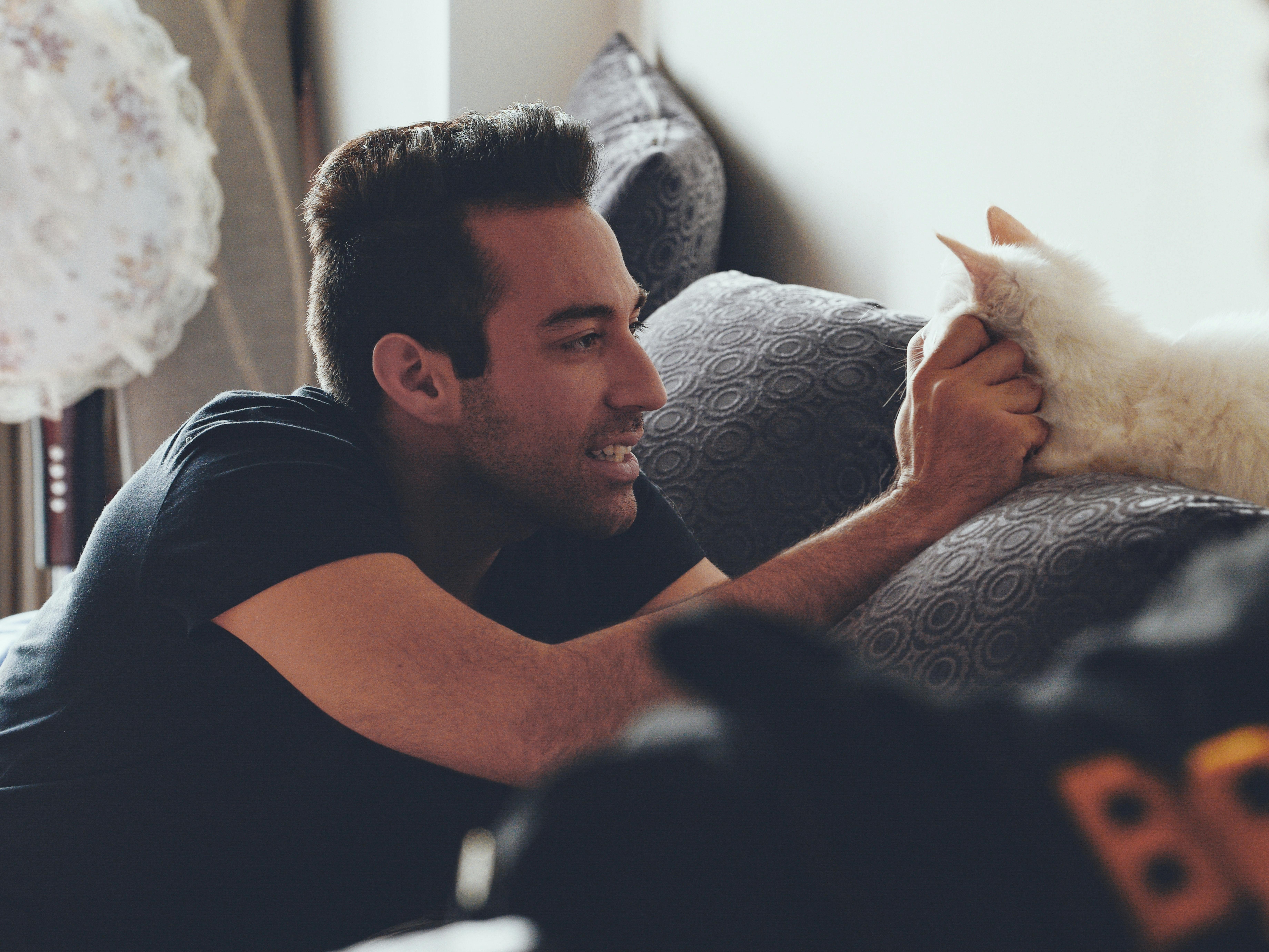
By Grace Park
Published: 11/20/2020, edited: 09/07/2022
Save on pet insurance for your pet
You don't have to choose between your pet and your wallet when it comes to expensive vet visits. Prepare ahead of time for unexpected vet bills by finding the pawfect pet insurance.
Overview
It's a common misconception that cats can't learn tricks. But the reality is they can if they want to. Cats are brilliant, independent, and often self-driven animals — scientists have reason to believe felines even domesticated themselves. So how can you teach tricks to a cat who is uninterested in just about everything? You make them interested in rewards.
How to make your cat interested in learning tricks
The first step to teaching your cat tricks is to learn what motivates them. Is food your cat's driving force? Do they live for catnip toys? Are they #obsessed with pets and cuddles? Figuring this out will be paramount for getting your cat interested in learning new things.
Rewarding your cat for doing tricks
Reward your cat within 3 seconds of the desired action. Waiting too long between the behavior and the reward can send mixed signals about which behavior is the desired one.
Clickers are a fantastic tool for this purpose since they can "mark" or identify the action as it's happening, and then you can treat or praise without the rush. Like humans, cats have neurological pathways that are activated when rewarded, making them want to repeat the behavior again and again.
Clicking or treating a cat for no reason will confuse your cat and may make them not want to train in the future. Animal behaviorists call this phenomenon "reinforcer devaluation."
Rewarding your cat with food
Give your cat little morsels of food rather than rewarding with large "jackpots" of treats. Tiny pieces of chicken, cheese, or fish are “purrfect” for this. Cut the food into pea-sized bits to prevent their stomach from getting full quickly — and thus keep them engaged for longer.
Rewarding your cat with toys
Toys are a great motivator for playful cats and kittens. When your cat performs the desired trick, toss the toy to them, but make it exciting. Rather than simply handing over the toy, move it around on the floor or drag it by a string. The only downside to rewarding with toys is they may put your cat into play mode, and it can be difficult to get back into the training mindset.
Rewarding your cat with affection and praise
Always reward your cat with affection and praise, regardless of if you use other reward systems as well. Like humans, affection and praise activates reward pathways in a cat's brain and makes them want to repeat the action.
When should I train my cat?
Training can start as soon as they are a few weeks old or as late as their senior years. The age of the cat isn't as important as how engaged they are. The right time to train is when your cat is actively focusing on you. If you’re using food as a reward, it might help to train between meals when your cat is starting to get hungry.
Introducing the clicker
When introducing clicker training, stand a few feet from your cat and press the clicker's button repeatedly until they look at you. When they look at you, click once more and treat. Repeat this exercise over a couple of days until your cat consistently looks at you when you click.
What tricks should I teach my cat?
A good starting place is to train your cat to do something they already do, but just on command.
Think “sit”, “lay down”, “come”, and standing up on their back feet. Start with simple commands and then work up to the more advanced stuff. With some consistency, your cat will be leaping through hoops in no time!
Coming when they're called
Start just a couple feet away from your cat and then gradually back away, calling them from farther and farther away. For cats that are food-oriented, this is the easiest trick to teach. Call your cat every time you put food down for them so they make a positive association between you calling their name and eating.
Sitting or laying down on command
Put some treats in your pocket, then sit back and watch your cat. When you see Fluffy sit, click the clicker, say "sit", and reward them. With a few repetitions, your cat will be sitting on command! The “lay down” command follows the same process, just with different command words.
Standing on their hind legs
Hold a treat over your cat's head until they stand up to get it. When Fluffy does this, click, say "up", then treat. Repeat this a few times, and soon Fluffy will be standing up simply by using the command and hand motion.
Tips for teaching your cat tricks
- Find treats that your cat likes.
- Remember that persistence is paramount.
- Take breaks often but practice every day.
- Be consistent with rewards — cats don't work for free.
- Don’t force them to respond if they’re not interested.
- Never verbally or physically punish your cat for not performing a trick or doing it incorrectly.
The most important tip of all when training a cat is to have fun and not take things too seriously. With consistency, your cat will master their tricks in no time!
You may also like
